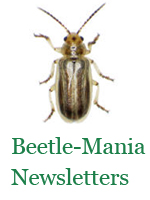Biology | History | Host Range | Implementation | Weeds | Literature | Links
Biology
Amynothrips andersoni is native to South America. There are two distinct forms short-winged and long-winged. Females lay their eggs on or behind hairs on the leaf axils of alligatorweed. Females may lay approximately 200 eggs. The life cycle takes about 28 days.
Damage is primarily on the new growth of buds, leaves and flowers. Leaf feeding on the edge of the leaves causes them to curl.
History
Alligatorweed thrips was first released in 1967 in Florida, Georgia, South Carolina, and California. It was released in Texas and Mississippi the following year.
Host Range
The impact of this insect is uncertain.
Implementation
Little is done to manage this thrips. They have been widely distributed and established.
Weeds Affected
Adults and immatures feed on alligatorweed.
Literature
Grodowitz, M. J., W. A. Johnson, T. D. Center, G. Buckingham, and A. F. Cofrancesco, Jr. 1989. The use of biocontrol technology for the management of introduced aquatic plants: A short course. U. S. Army Corps of Engineers, Jacksonville District. Slide set and manual. 117 pp
Links

